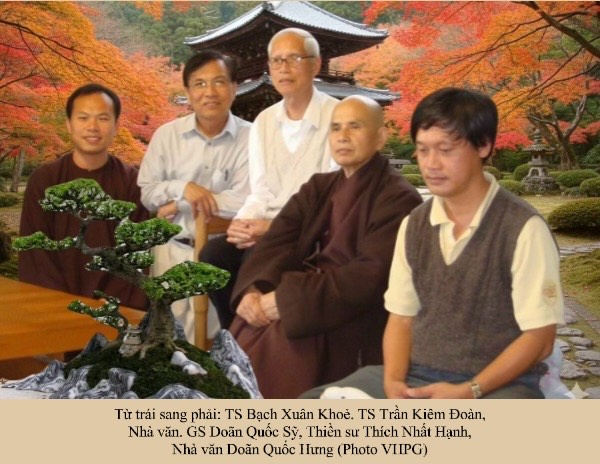
February 26, 2023
Contemplative Science
During this past weekend February 19, 2023, doctors, surgeons, neuroscientists, physicists, and professors got together at a recent Society for Brain Mapping & Therapeutics (SBMT) conference. The highlight was an interesting panel that included Brian Fertig, an endocrinologist, Jonathan Schooler, a professor of psychology, Jack Tuszynski, a physicist, and Deepak Chopra, a doctor in mind-body medicine. They discussed theories of sensory perception, quantum physics, metabolism, and consciousness in a fascinating integration of science and medicine.
Within a separate Vision Processing track of the SBMT conference, I presented on Mindfulness & Meditation in the management of Complex Brain Injury. Upon preparation, interesting information emerged regarding the science and benefits of these practices, not only for patients with neurological conditions, but for all.
In vision therapy, mindfulness can be incorporated in exercises that will improve awareness of the visual system. One can actually change how sensory information is received through the surrounding environment. This is powerful considering that vision is the primary source for sensorimotor processing and integration.
Mindfulness, simply defined, is one pointed, focused attention to the present moment, without judgment. One assumes the role of an impersonal, “witnessing observer”.
This state or quality of being was traditionally embedded in spiritual and religious practices such as Buddhism, Hinduism, and Christianity ancient practices. Breath and movement is integrated consciously in yoga, tai chi, martial arts, and meditation. Modern therapies incorporate mindfulness, such as pain reprocessing therapy, mindful cognitive behavioral therapy, and the Feldenkrais method.
Meditation, simply defined, is a practice of extended focused attention. This includes various types, including Visualization, Mantra, Vipassana, Transcendental, Loving kindness and Mindfulness based stress reduction. The beneficial effects are cumulative with practice, subjectively experienced by the practitioner, and scientifically measurable.
Neuroscientific evidence suggests that mindfulness & meditation increases overall self-regulation transforming pathways for improving:
attentional control
emotional regulation
self-awareness
empathy
Research has also shown that meditation practice can:
induce neuroplasticity
be immunoprotective
be neuroprotective
improve visual and cognitive processing
Neuroelectric and neuroimaging studies conclusively found changes in specific brain regions of meditators compared to controls. Changes in activity of white and grey matter can also lead to increased cortical thickness in areas that normally atrophy with age. EEG studies show increased alpha and theta signals associated with relaxation, and decreased anxiety levels.
Additionally, a recent study showed the same efficacy in reducing symptoms between patients taking medication for anxiety and mindfulness based stress reduction, without the problematic side effects of medication. Meditation is not intended to replace medical treatments but should not be ignored as a powerful adjunct to treatment and management.
Changing one’s relationship with the mind and having the discipline to do so can be very challenging. With proper commitment, motivation, and support, it can be life changing. Mindfulness and meditation is simple and accessible for all people. It is also an important consideration for palliative care with the ongoing support required in chronic conditions. Although recently integrated in modern healthcare, mindfulness and meditation practice itself is intuitive, with consistent benefits that stand the test of time, spanning thousands of years across multiple disciplines. Additional resources and research is listed below for reference.
Resources:
Books & Authors:
•No Mud, No Lotus: The Art of Transforming Suffering, Thich Nhat Hanh
•The Relaxation Response, Herbert Benson, MD
•Full Catastrophe Living, John Kabbat Zinn, PhD
•Breath, James Nestor
•Altered Traits, Daniel Goleman, PhD, Richard J, Davidson, PhD
•Healing & Recovery, David Hawkins, MD, PhD
•The Way Out, Alan Gordon, LCSW
•The Power of Now, Eckhart Tolle
•Luminous Life, Jacob Israel Liberman, OD, PhD
•The Mindful Way Workbook, Mark Williams, John Teasdale, Zindel Segal, Jon Kabat-Zinn
•Meditations for Breathing the Habit of Being Yourself, Joe Dispenza
APPS
– Calm
– Headspace
– Healthy Minds Program
•Recordings:
– Sound Baths
– Guided meditations
-Brainwave: Binaural Programs
-Yoga Nidra Meditation
References:
•Adam Koncz, Zsolt Demetrovics & Zsofia K. Takacs (2021) Meditation interventions efficiently reduce cortisol levels of at-risk samples: a meta-analysis, Health Psychology Review, 15:1, 56-84, DOI: 10.1080/17437199.2020.1760727
•Cahn, B. R., & Polich, J. (2006). Meditation states and traits: EEG, ERP, and neuroimaging studies. Psychological Bulletin, 132(2), 180–211. https://doi.org/10.1037/0033-2909.132.2.180
•Fox, K.C., Dixon, M.L., Nijeboer, S., Girn, M., Floman, J.L., Lifshitz, M., Ellamil, M., Sedlmeier, P., & Christoff, K. (2016). Functional neuroanatomy of meditation: A review and meta-analysis of 78 functional neuroimaging investigations. Neuroscience & Biobehavioral Reviews, 65, 208-228.
•Goleman, D., & Davidson, R. J. (2018). Altered traits: Science reveals how Meditation Changes Your Mind, brain, and body. Avery, an imprint of Penguin Random House.
•Gordon, A., & Ziv, A. (2022). The way out: A revolutionary, scientifically proven approach to healing chronic pain. Avery.
•Gordon, A., & Ziv, A. (2022). The way out: A revolutionary, scientifically proven approach to healing chronic pain. Avery.
•Hoge, E. A., Bui, E., Marques, L., Metcalf, C. A., Morris, L. K., Robinaugh, D. J., Worthington, J. J., Pollack, M. H., & Simon, N. M. (2013). Randomized controlled trial of mindfulness meditation for generalized anxiety disorder: effects on anxiety and stress reactivity. The Journal of clinical psychiatry, 74(8), 786–792. https://doi.org/10.4088/JCP.12m08083
•Kabat-Zinn J, Wheeler E, Light T, Skillings A, Scharf MJ, Cropley TG, Hosmer D, Bernhard JD. Influence of a mindfulness meditation-based stress reduction intervention on rates of skin clearing in patients with moderate to severe psoriasis undergoing phototherapy (UVB) and photochemotherapy (PUVA). Psychosom Med. 1998 Sep-Oct;60(5):625-32. doi: 10.1097/00006842-199809000-00020. PMID: 9773769.
•Kuboy, Marcus, “Impact of Traumatic Brain Injury on Mindfulness in Veterans who have PTSD” (2015). Social Work Master’s Clinical Research Papers. 471. https://ir.stthomas.edu/ssw_mstrp/471
•Lazar, S. W., Kerr, C. E., Wasserman, R. H., Gray, J. R., Greve, D. N., Treadway, M. T., McGarvey, M., Quinn, B. T., Dusek, J. A., Benson, H., Rauch, S. L., Moore, C. I., & Fischl, B. (2005). Meditation experience is associated with increased cortical thickness. Neuroreport, 16(17), 1893–1897. https://doi.org/10.1097/01.wnr.0000186598.66243.19
•Rui Ferreira Afonso, Inessa Kraft, Maria Adelia Aratanha, Elisa Harumi Kozasa. Neural correlates of meditation: a review of structural and functional MRI studies. Front. Biosci. (Schol Ed) 2020, 12(1), 92–115. https://doi.org/10.2741/S542
•Salat, D. H., Buckner, R. L., Snyder, A. Z., Greve, D. N., Desikan, R. S. R., Busa, E., Morris, J. C., Dale, A. M., & Fischl, B. (2004). Thinning of the cerebral cortex in aging. Cerebral Cortex, 14(7), 721-730. https://doi.org/10.1093/cercor/bhh032
•Tang, Y.‑Y., Hölzel, B. K., & Posner, M. I. (2015). The neuroscience of mindfulness meditation. Nature Reviews Neuroscience, 16(4), 213–225. https://doi.org/10.1038/nrn3916
•Zeidan, F., Johnson, S. K., Diamond, B. J., David, Z., & Goolkasian, P. (2010). Mindfulness meditation improves cognition: evidence of brief mental training. Consciousness and cognition, 19(2), 597–605. https://doi.org/10.1016/j.concog.2010.03.014



